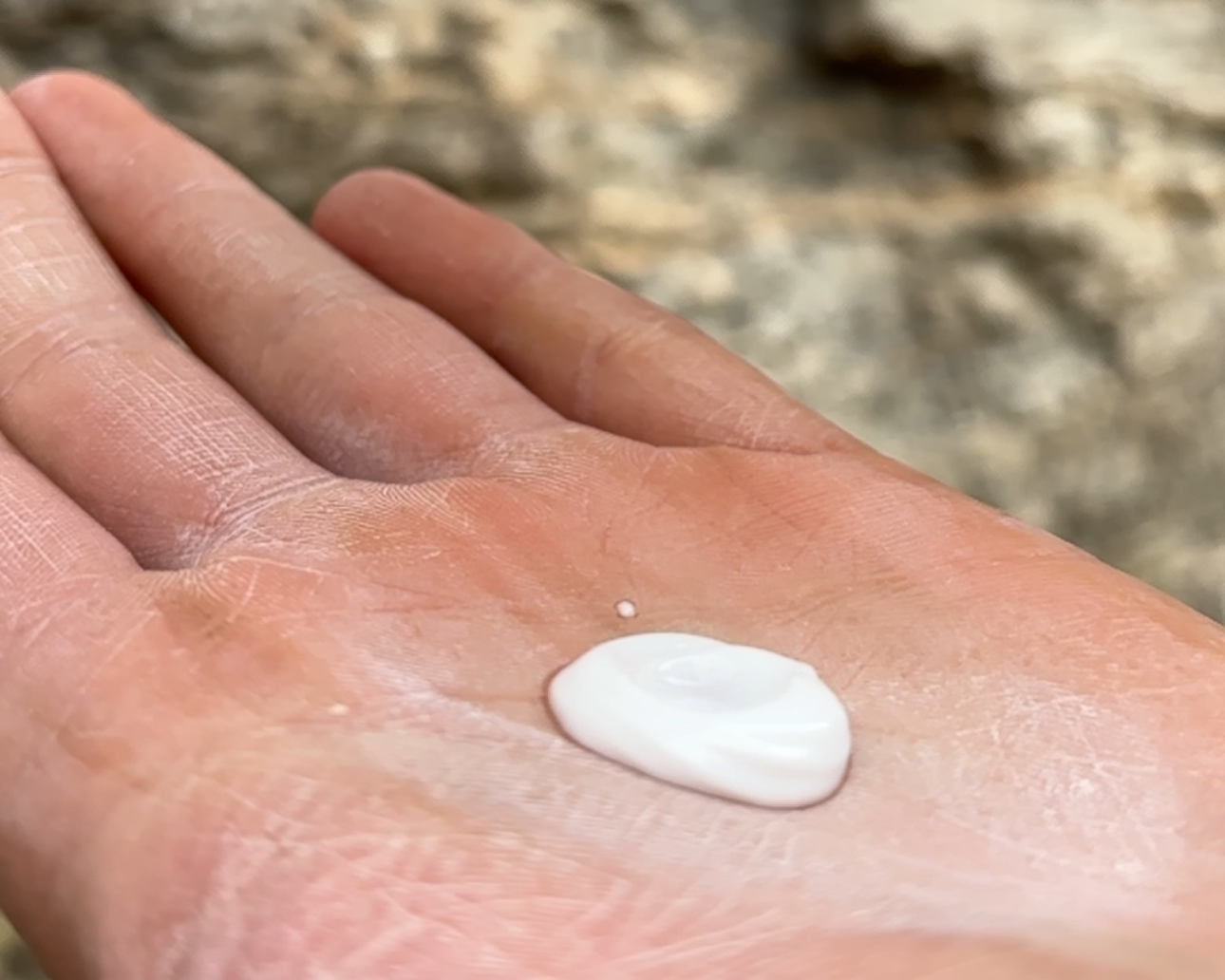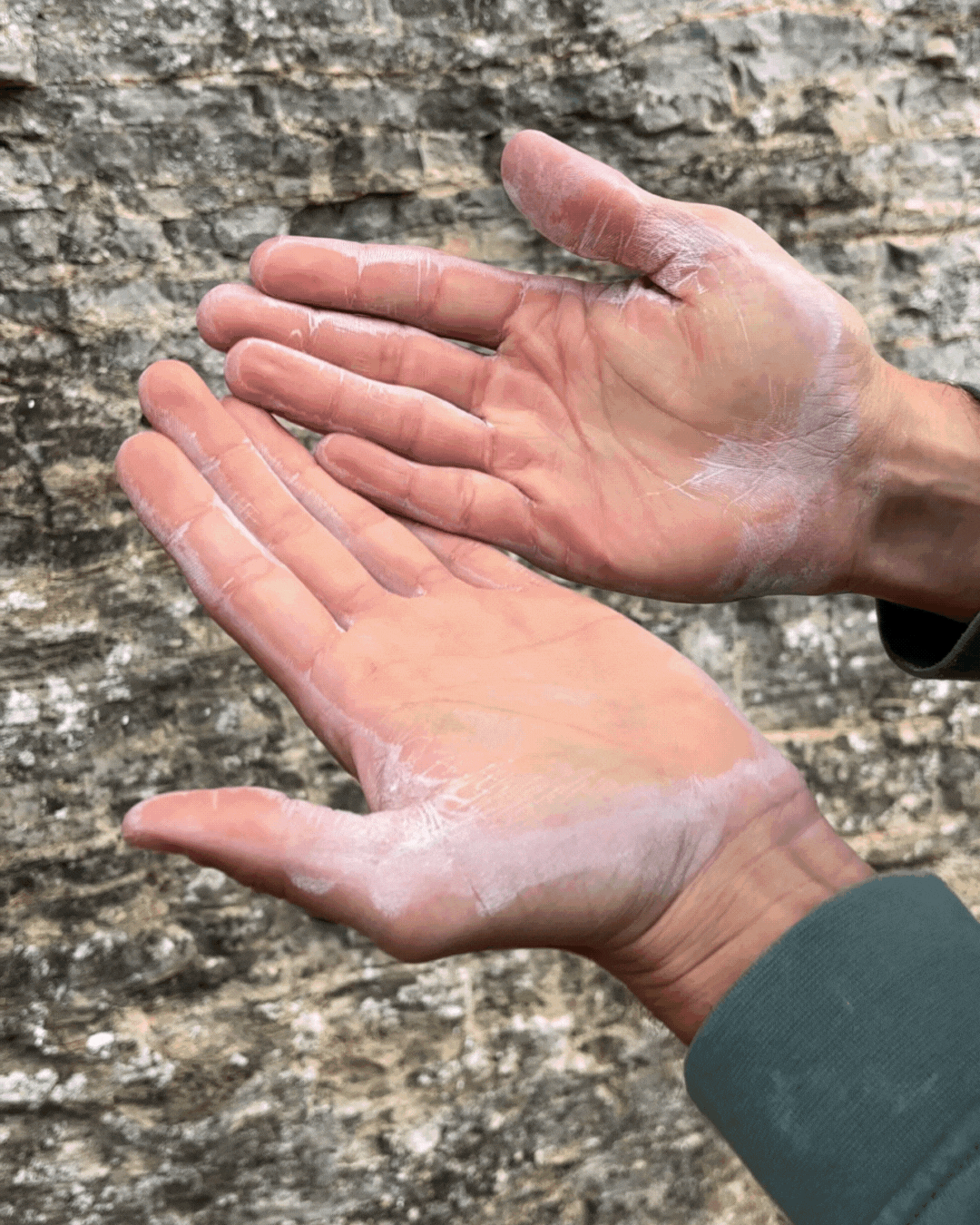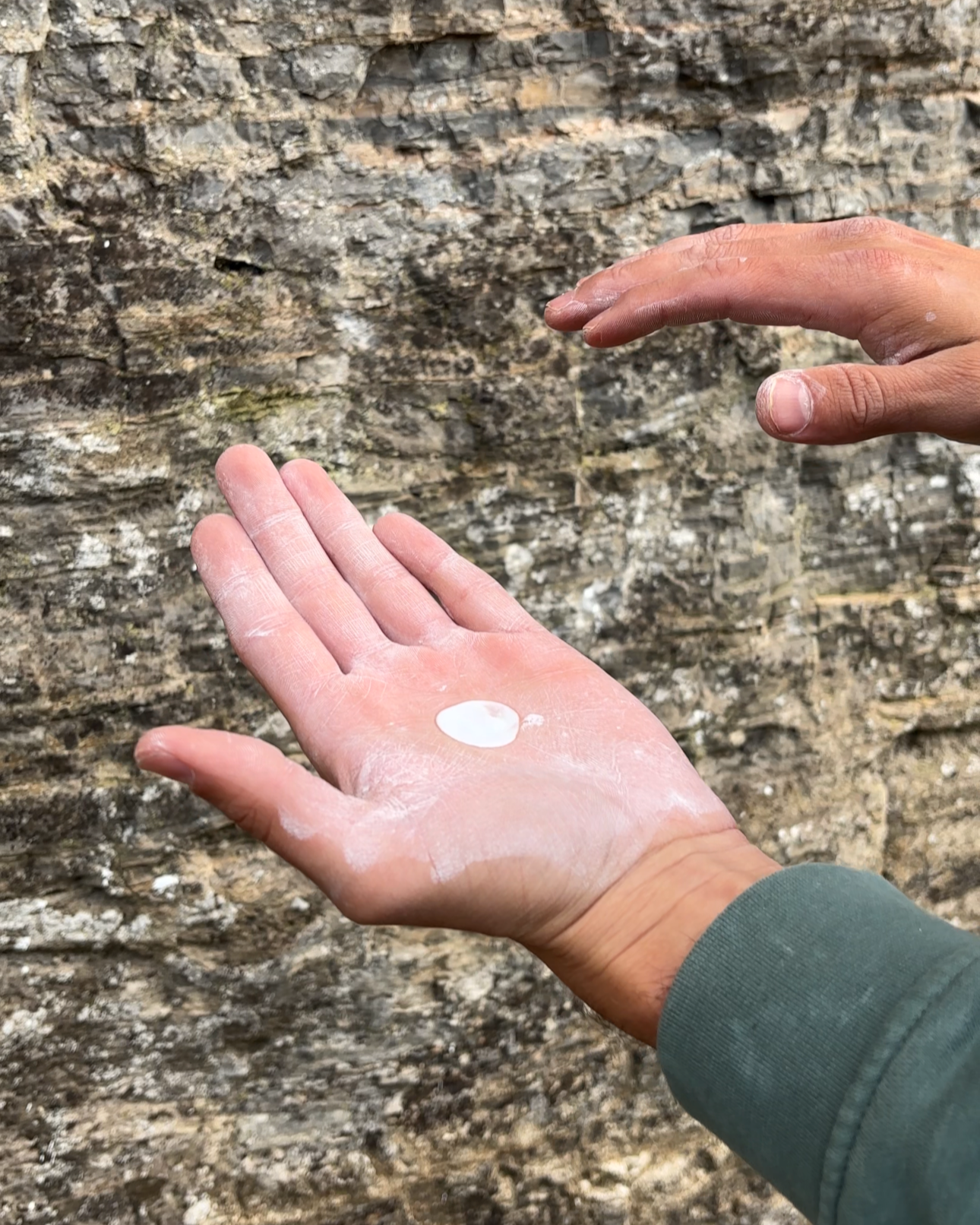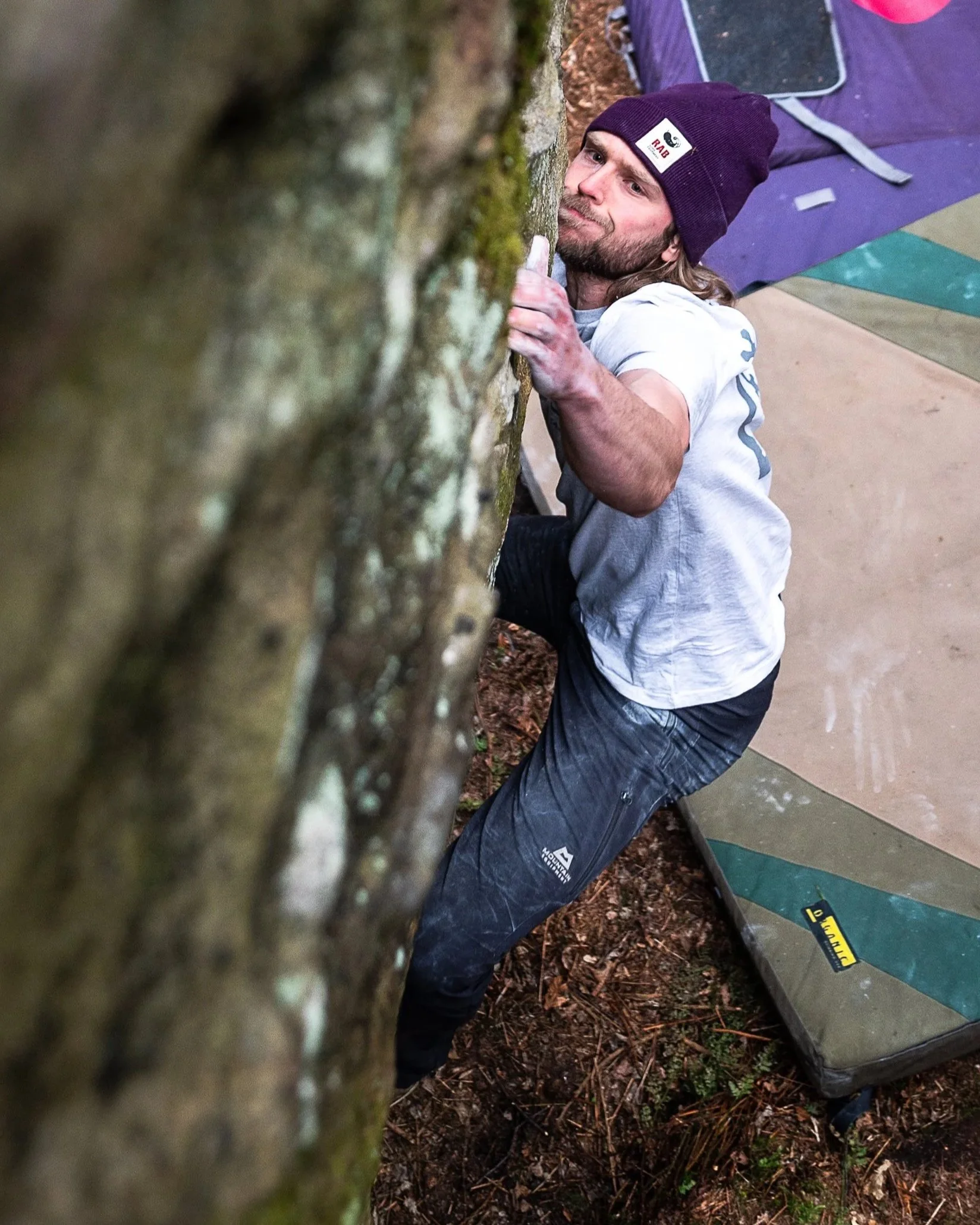Top 6 Liquid Chalk Myths Debunked
Liquid chalk is like marmite - you love it or hate it. However, it has come a long way from its rocky start (pun intended). When it first appeared in the climbing world, many climbers wrote it off as a messy gimmick - sticky, smelly, and nowhere near as effective. But this early reputation has stuck around longer than it deserves. In reality, today’s liquid chalk is a completely different product - cleaner, longer-lasting, and of comparable effectiveness.
We’re here to separate fact from fiction and debunk the most common myths about liquid chalk - where the bad rap came from, what’s changed and why it might be time to give it another shot.
“It’s an inferior performance product”
What used to be a poorly created, sticky sludge is now a product on par with the performance of loose chalk and for many skin types better than loose! A lot of liquid chalks contained resin, a sticky substance which, on paper, sounds great for performance. However, resin doesn’t perform the way we think it would, instead filling in the pores and texture of holds, creating a glassy layer on the surface, in turn reducing grip and performance. Also due to its sticky nature, it quite literally sticks used chalk to your hands - and chalk can only absorb so much moisture, so once it’s used you really want it gone, which is difficult as resin is extremely hard to wash off your hands! We’re experts on this topic, as we created the world’s first resin-free thickener-free liquid chalk. Nowadays, a few other liquid chalk brands have followed suit and removed resin, however they have substituted it for other additives such as thickeners (lube) which bulk up the product and make it cheaper/easier to make. All this does is hinder your performance, so make sure you check those ingredient lists and avoid liquid chalks with unknown and ambiguous materials! Opt for a liquid chalk with just magnesium carbonate and ethanol - and the performance will match that of loose chalk!
“More is better”
Chalk enhances grip, so more chalk = more grip, right? Well, not entirely. A chickpea-sized amount tends to be sufficient, depending on hand size and sweatiness. For fresh skin at the start of your session, maybe a kidney bean sized squirt, but rarely more than that! When you apply too much liquid chalk (or any chalk for that matter), it can make your hands feel more slippery as the multiple layers of chalk will actually slide over themselves, reducing your grip. It can also take much longer to dry, which leads us to our next point…
“It takes too long to dry”
Standing around, waiting for your liquid chalk to dry, waving your hands around like a madperson - sound familiar? Liquid chalk tends to have this reputation of being ‘inconvenient’ when it comes to needing a quick application. As climbers, sometimes we want to quickly chalk up and jump on a problem especially when the gym is packed. The reason for this bad rap is due to the high water content that a lot of liquid chalks contain, alongside the gloopy thickeners added to make them look more ‘full’ of chalk, and understandably these factors are hugely detrimental to drying time. But that doesn’t have to be the norm anymore. With brands such as ourselves, liquid chalk has a much lower water content and no thickeners, meaning it dries in as little as a few seconds. This means less time waiting, more time climbing.
“It damages holds”
If you’ve ever spoken to a staff member at your gym or worked a stint in your local wall, you’ll know how difficult and laboursome it is to clean climbing holds. Steam pressure washers and strong chemicals are the norm, the gunk just never seems to come off with brushing. This is due to resin (yes, that culprit again) which fills in the pores of the holds, dries, and creates a glassy texture. Resin is extremely hard to remove, not water soluble and used to be found in pretty much every liquid chalk before we lead The Resin-Free Movement (trademarked of course, just don’t check). Now, a lot of liquid chalks have removed the resin, which means less damage to the holds and you can sleep easy knowing the staff won’t be mad at you. BUT do us all a favour, if you see someone using an Amazon special liquid chalk, introduce them to us or your other fave resin free liquid, because until all resin is gone from gyms, the problem will continue.
“It’s bad for sensitive skin”
When liquid chalk became ‘a thing’, climbers with sensitive skin knew immediately that this was definitely not the product for them. Most liquid chalks use isopropyl alcohol (IPA) which is a harsh alcohol derived from petroleum. This was known to cause issues for those with sensitive skin, exacerbating conditions such as eczema, skin cracking and other forms of dermatitis. But there’s hope! A few brands use ethanol (including ourselves, of course) which is a much gentler alternative to IPA and ours is derived from plants right here in Yorkshire. It doesn’t have the same negative effects on skin that IPA does, meaning most people will be able to use it comfortably (skin reactions are different for each person though, so make sure you test it out first!). Just check which alcohol is in your liquid chalk before you buy!
“It’s bad for the environment/rock”
Back to resin - I know, broken record. Liquid chalk got its reputation for being bad for the rock due to resin - or more to the point for clogging up holds, but this is because of resin. It does the exact same thing to rock as it does to holds, but this time you can’t steam pressure wash it or use harsh chemicals. The long-term effects of resin on crags is huge, just think of Fontainebleau. Since a few liquid chalks have now removed resins, it’s safe to use outdoors now - and even better, choose a brand like GEKCO which only contains magnesium carbonate and ethanol, two ingredients that have no negative effects on the environment and are easily washed away by the rain!
Liquid chalk doesn’t deserve the bad reputation it was given years ago. The formulas have evolved, the performance has improved, and now it’s one of the most convenient, effective and gym-friendly options out there. It’s actually way better for keeping our gyms a low dust environment!
So if you’re avoiding it because of what you’ve heard (or what it used to be), it might be time to give liquid chalk another shot - you might just find that it's the upgrade your climbing routine has been missing.







